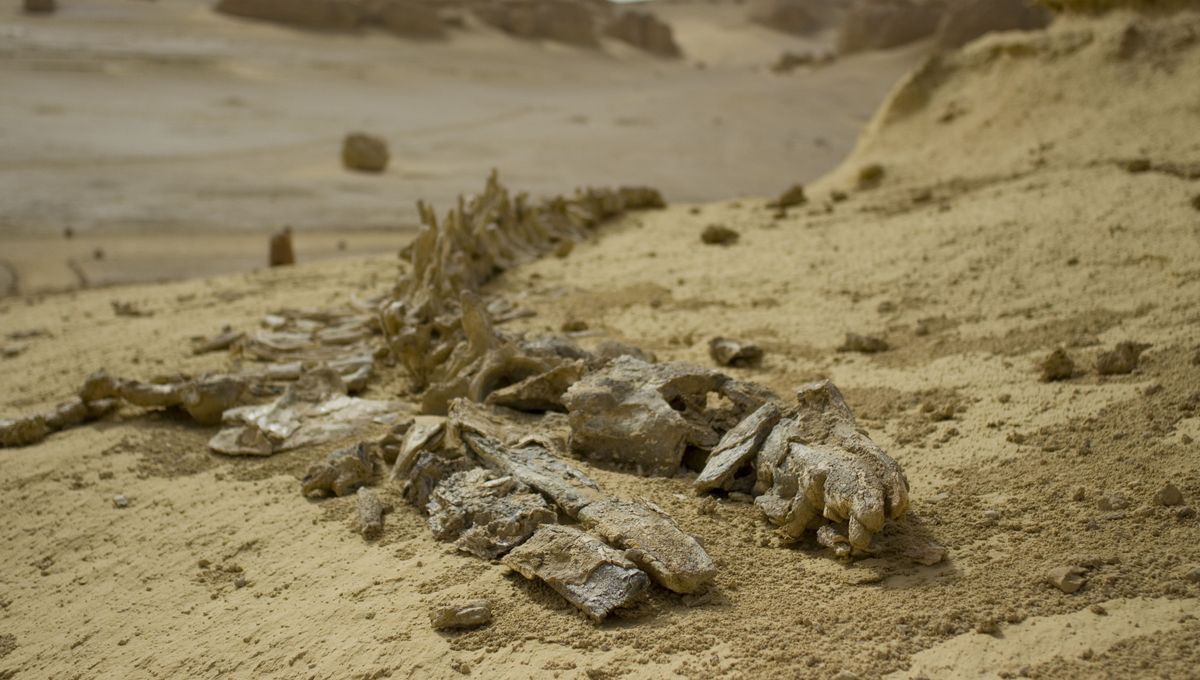
It might seem hard to believe, but the ancestors of today’s whales were once land-dwelling animals. Given that they’re now very much residents of the ocean, clearly they left land for water at some point – but what did that look like? For a long time, the answer to that question was a mystery – then people found Wādī al-Ḥītān.
The rest of this article is behind a paywall. Please sign in or subscribe to access the full content.
Known in English as Whale Valley, this site in Egypt’s Western Desert is home to the largest ancient whale graveyard in the world, with over 400 near-complete and exquisitely preserved prehistoric whale skeletons having been discovered there. Many of them date back to around 40 million years ago, a time when what now makes up part of the Sahara was covered by the Tethys Sea.
The fossils at the site reveal this to have been a crucial period in the history of whales – this was the time of the archaeocetes, the earliest suborder of whales that we know of, and they appear to bridge the gap between land and sea.
“These fossils represent one of the major stories of evolution: the emergence of the whale as an ocean-going mammal from a previous life as a land-based animal. This is the most important site in the world for the demonstration of this stage of evolution,” reads the 2005 decision to make Whale Valley a UNESCO Heritage Site.
“The fossils of Al-Hitan show the youngest archaeocetes, in the last stages of losing their hind limbs. They already display the typical streamlined body form of modern whales, whilst retaining certain primitive aspects of skull and tooth structure.”
One of these in-betweeny whales is Basilosaurus isis, which was 16 meters (52 feet) long and had a powerful bite. But don’t let that or its name deceive you – these animals were definitely archaeocetes, not reptiles. The reason “saurus” ended up in the name was because, when Basilosaurus bones were first uncovered in the 19th century, palaeontologists thought the backbone was similar to that of Mesozoic-era marine reptiles.
Basilosaurus was fully aquatic, like its modern relatives, but also retained a whisper of its land-swelling relatives’ characteristics. It still had hind limbs, for example, although they might not have been much use.
“[A]t less than half a meter in length the diminutive limbs probably would not have assisted Basilosaurus in swimming and certainly would not have enabled it to walk on land,” explains the UNESCO nomination file for Whale Valley.
There’s some suggestion, however, that they may have come in handy (or leggy, in this case) when it came to aquatic mating. You win some, you lose some.
Source Link: The Largest Ancient Whale Graveyard In The World Is In The Middle Of… A Desert?